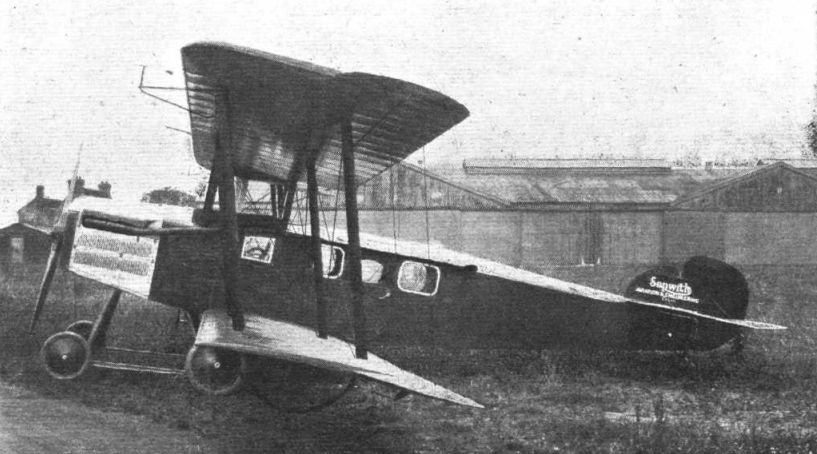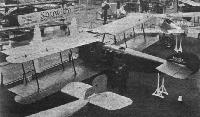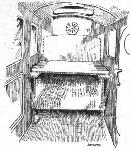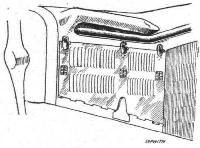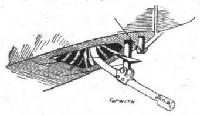Sopwith. Самолеты 1919-1920 годов
<...>
На основе Wallaby был спроектирован гражданский самолет Antelope с мотором Wolseley Viper мощностью 180 л. с. Летчик размещался в открытой кабине, а два пассажира - в закрытой. Единственный Antelope выполнил первый полет в 1920 году. Позже на самолете установили мотор Siddeley Puma, в таком виде машину использовали для доставки авиапочты до 1935 года.
<...>
Показать полностьюShow all
Flight, July 1920
The Olympia Aero Show 1920
The machines
Sopwith Aviation and Engineering Co., Ltd. (STAND 42) 65, South Molton Street, London, W.1, and Kingston.
The "Antelope" is also a tractor biplane, on more or less normal lines, and is intended to serve the purpose of a utility machine, characterised by the highest possible performance compatible with great structural strength and having a wide speed range - 38 to 100 m.p.h. Accommodation is provided for pilot and two passengers, the former being located high up between the main planes, whilst the latter are enclosed in a comfortable cabin of 50 cubic ft. capacity, aft of the planes. A door in the side of the cabin enables the passengers to enter straight from the ground. Triplex windows in the cabin provide a good field of view, whilst one of the passenger's seats is adjustable so that, on sliding open a door in the roof, the passenger may sit in the open if desired. The engine, a 180 h.p. Hispano-Suiza "Viper," is enclosed by a quick detachable cowling, giving extreme accessibility, and is fitted with a Back and Manson self-starter, operated from the pilot's cockpit. A fire-proof bulkhead is interposed between the fuel tanks and engine. There are no welded joints in the machine.
The Sopwith Machines
The third machine exhibited by Sopwiths - the Antelope - is very much on the lines of the Sopwith Atlantic and Australia machine, with, of course, a rearrangement of the passengers' and pilot's cockpits. In the Antelope the pilot sits in front of the cabin, where his view is very good in all directions, the upward view being improved by cutting away the trailing edge of the top centre section. The two passengers, who enter the cabin through a door in the port side, sit facing one another in comfortable wicker-work chairs. The back rest of the aft seat is hinged, and when tipped down so as to rest on the arms of the chair forms a raised seat, allowing the passenger to sit with his head outside the cabin roof.
The 180 h.p. Hispano Viper engine is enclosed in an aluminium cowl hinged along the lower longerons. By undoing a few bonnet fasteners the whole side of the engine housing can be opened for inspection of the engine.
As exhibited, the Sopwith Antelope has a simple V-type undercarriage, but lugs are provided for attaching, if desired, a pair of front wheels which will protect the propeller and prevent the machine from nosing over on landing.
A steel tube steerable tail skid is provided, and the opening in the floor of the body through which the skid passes has a flexible cover of oilcloth which prevents dirt thrown up by the skid from getting inside the fuselage.
Показать полностьюShow all
Flight, August 1920
THE AIR MINISTRY COMPETITION AT MARTLESHAM
Some Notes on the Machines Entered
The Sopwith "Antelope" 180 h.p. Hispano-Suiza
The machine entered by the Sopwith Aviation and Engineering Co. is the "Antelope" exhibited at Olympia. A few minor alterations have, we understand, been made to various parts, but the machine is essentially as shown at Olympia. One difference will be noticed, however, in the undercarriage. This is of the four-wheeled type, an extra pair of wheels having been fitted since the show. It may be remembered that one of the tests to be made at Martlesham consists in landing over obstacles 50 ft. above the ground and coming to rest inside a circle marked out on the ground. As side-slip landings are not permitted, and the machine must be brought to rest after the shortest possible run, special arrangements have been made on several of the machines entered for pulling-up quickly, and the extra pair of wheels on the Sopwith "Antelope" may be expected to form part of such a scheme. What the nature of the arrangement is on this particular machine cannot be stated at the moment.
The "Antelope," it may be remembered, is a cabin tractor biplane, with the pilot situated in front of the cabin, where his view is reasonably good. The cabin seats two passengers, one facing forward and one aft. The back-rest of the aft seat is' hinged, and when folded down forms a raised seat which allows the passenger to sit with his head outside. The sliding panel in the roof is provided with a wind-screen, so that when travelling "outside" the passenger is protected against the wind. Particular attention has been paid to the accessibility of the engine. The two aluminium, side panels are hinged along the bottom longeron, and fold down after undoing a few bonnet fasteners, thus giving easy access to the Wolseley Hispano engine.
The span of the machine is 46 ft. 6 ins. and the length 30 ft. 6 ins. The total wing area is 550 sq. ft. The maximum speed is about 100 m.p.h. and the cruising speed 85 m.p.h. The landing speed is approximately 38 m.p.h., and the machine climbs to 5,000 ft. in 7 1/2 mins. Fuel is carried for a range of about 450 miles.
Показать полностьюShow all
